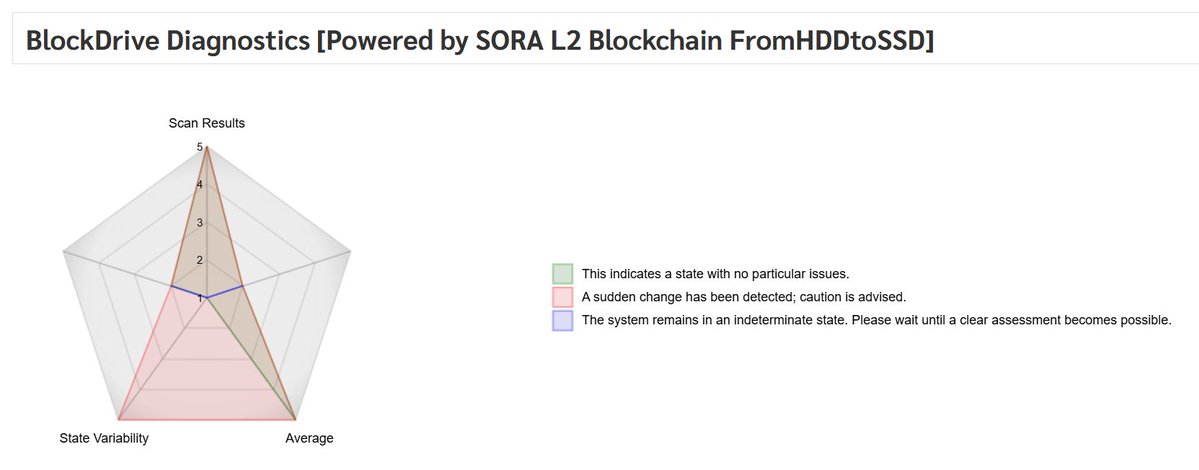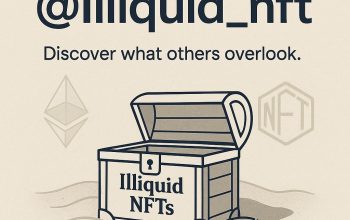The Intersection of Blockchain, Data Analysis, and User Engagement
The Evolution of Data Visualization in Blockchain
In the rapidly evolving world of blockchain technology, the ability to aggregate and analyze data has become increasingly crucial. The implementation of a user interface (UI) to aggregate the analysis results of the SORA L2 Blockchain is a testament to this trend. This UI not only simplifies the complex data generated by blockchain transactions but also makes it accessible to a broader audience. By providing a visual representation of data, users can gain insights more intuitively, fostering a deeper understanding of blockchain operations.
Simplifying Complex Data
The SORA L2 Blockchain’s UI is designed to collect and display analysis results in a user-friendly manner. This development is part of a broader movement towards making blockchain technology more approachable and transparent. As blockchain continues to permeate various industries, from finance to supply chain management, the need for effective data visualization tools becomes ever more pressing. These tools enable stakeholders to make informed decisions based on real-time data, enhancing the overall efficiency and reliability of blockchain systems.
Enhancing User Experience
By providing a visual representation of data, the UI makes it easier for users to understand the intricacies of blockchain transactions. This not only demystifies the technology but also encourages wider adoption. For instance, a visual dashboard that shows transaction volumes, network activity, and smart contract executions can help users quickly grasp the health and performance of the blockchain network. This level of transparency is crucial for building trust and engagement among users.
The Power of Shell Scripting in Log Analysis
On the other side of the tech spectrum, shell scripting has emerged as a powerful tool for log analysis. A recent tweet highlights the creation of an interactive shell script designed to analyze NGINX logs. This script allows users to extract specific insights, such as top IPs, paths, status codes, and user agents, with ease. The ability to quickly generate these insights can be invaluable for system administrators and developers, enabling them to identify and address issues more efficiently.
Automating Log Analysis
Shell scripting’s versatility makes it an ideal tool for log analysis. By automating the process of sifting through vast amounts of log data, scripts can save time and reduce the likelihood of human error. Moreover, the interactive nature of the script allows users to tailor their analysis to specific needs, making it a flexible and powerful tool for a variety of applications. As DevOps practices continue to gain traction, the role of shell scripting in log analysis is likely to become even more prominent.
Practical Applications
For example, a system administrator can use a shell script to monitor server performance and identify potential bottlenecks. By analyzing log data, the script can highlight patterns that indicate issues, such as frequent errors or high latency. This proactive approach allows administrators to address problems before they escalate, ensuring smooth operation and minimizing downtime.
The Role of Airdrops in Community Engagement
In the world of cryptocurrency, airdrops have become a popular method for distributing tokens and engaging with the community. A recent tweet discusses the allocation analysis of airdrops on the Magic Newton Discord, highlighting the importance of early participation and community roles. By rewarding early adopters and active community members, airdrops can foster a sense of loyalty and engagement, driving the growth and success of a project.
Building Community Loyalty
The allocation of airdrops is often based on various factors, including the role of participants within the community. For example, early explorers and seekers of truth may receive higher allocations, incentivizing early adoption and active participation. This strategy not only helps to build a strong community but also ensures that the tokens are distributed fairly and effectively. As the cryptocurrency landscape continues to evolve, the role of airdrops in community engagement is likely to remain a key factor in the success of blockchain projects.
Case Studies
Consider the example of a blockchain project that uses airdrops to reward early adopters. By offering tokens to those who participate in the initial stages of the project, the community is incentivized to stay engaged and contribute to its growth. This can lead to a more vibrant and active community, which in turn can attract more users and investors.
The Legal Implications of Crypto Asset Forfeiture
The intersection of blockchain technology and legal frameworks is a complex and evolving area. A recent tweet discusses a two-hour training session on crypto asset forfeiture, highlighting the challenges and considerations involved in this process. The training covered topics such as chain analysis, token metadata, and fair market value, all of which are crucial for understanding the legal implications of seized cryptocurrency assets.
Navigating Legal Challenges
One of the key challenges in crypto asset forfeiture is determining the fair market value of seized assets. In the world of Web3, the concept of “floor price” can be particularly relevant, especially when dealing with seized NFT scams. The floor price represents the lowest price at which an NFT can be sold, providing a benchmark for valuing seized assets. As the legal landscape continues to adapt to the complexities of blockchain technology, the role of chain analysis and token metadata will become increasingly important in ensuring fair and effective asset forfeiture.
Ensuring Fairness
For instance, in a case where NFTs are seized, the floor price can be used to determine the value of the assets. This ensures that the valuation is fair and reflects the current market conditions. Additionally, chain analysis can help trace the origin and ownership of the assets, providing a clear picture of their history and legitimacy.
The Cultural Influence of Digital Collectibles
The world of digital collectibles, particularly NFTs, has seen a surge in popularity in recent years. A recent tweet discusses the cultural influence of digital collectibles, highlighting the renewed interest in art-inspired NFTs. Art-driven narratives are drawing in new demographics, expanding the market and fostering a more diverse and inclusive community.
Expanding the Market
The cultural impact of digital collectibles extends beyond the art world, influencing various industries and communities. As more people become aware of the potential of NFTs, the demand for art-inspired collectibles is likely to continue growing. This trend not only benefits artists and creators but also opens up new opportunities for investors and collectors. As the market for digital collectibles continues to evolve, the role of art-driven narratives will be crucial in shaping its future.
Real-World Examples
Consider the example of an artist who creates a series of NFTs based on their artwork. By leveraging the cultural influence of digital collectibles, the artist can reach a global audience and generate significant revenue. This not only supports the artist but also contributes to the growth of the NFT market, making it more accessible and appealing to a wider range of people.
The Future of User Engagement in Blockchain
The future of user engagement in blockchain technology is bright and full of possibilities. From the implementation of user-friendly UIs to the use of shell scripting for log analysis, the tools and techniques available to users are becoming more sophisticated and accessible. As blockchain technology continues to evolve, the need for effective data visualization and analysis tools will only grow, driving innovation and growth in the industry.
Driving Innovation
The role of airdrops in community engagement is another area of significant potential. By rewarding early adopters and active community members, airdrops can foster a sense of loyalty and engagement, driving the growth and success of blockchain projects. As the legal landscape continues to adapt to the complexities of blockchain technology, the role of chain analysis and token metadata will become increasingly important in ensuring fair and effective asset forfeiture.
Embracing New Technologies
For example, the use of AI and machine learning in blockchain can enhance data analysis and visualization, providing users with even more insights and tools. This can lead to more informed decision-making and better user engagement, ultimately driving the growth and success of blockchain projects.
Conclusion: Embracing the Future of Blockchain Technology
In conclusion, the intersection of blockchain technology, data analysis, and user engagement is a dynamic and exciting field. From the implementation of user-friendly UIs to the use of shell scripting for log analysis, the tools and techniques available to users are becoming more sophisticated and accessible. As blockchain technology continues to evolve, the need for effective data visualization and analysis tools will only grow, driving innovation and growth in the industry.
The role of airdrops in community engagement is another area of significant potential. By rewarding early adopters and active community members, airdrops can foster a sense of loyalty and engagement, driving the growth and success of blockchain projects. As the legal landscape continues to adapt to the complexities of blockchain technology, the role of chain analysis and token metadata will become increasingly important in ensuring fair and effective asset forfeiture.
As we look to the future, it is clear that blockchain technology will continue to play a pivotal role in shaping the digital landscape. By embracing the tools and techniques available to us, we can unlock new opportunities and drive innovation in the industry. The future of blockchain technology is bright, and the possibilities are endless.





